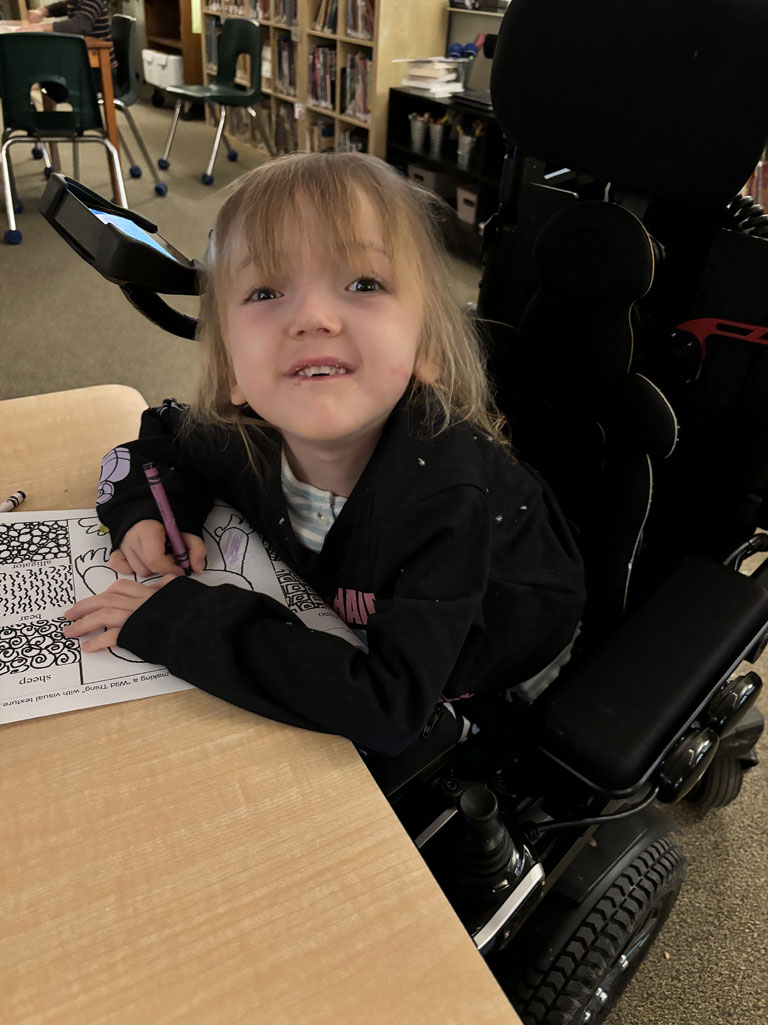Life at iLevel Canada


Enhancing Accessibility in Elementary Schools: Lennon's Journey with the Edge 3 Stretto Power Wheelchair
by Lennon Ferri
In today's world, accessibility is not just a concept; it's a necessity. For children like Lennon, navigating the school environment independently is essential for their growth and development. The Edge 3 Stretto has marked a significant milestone in her journey towards independence, providing her with increased mobility and freedom.
The Stretto has been ideal for navigating crowded hallways and classrooms. The Stretto’s compact design allows Lennon to move around with ease, empowering her to participate fully in school activities alongside her peers, and the iLevel feature gives Lennon a brand-new view of the school! The customizable features of the wheelchair ensure optimal comfort and support for Lennon throughout the school day.
While Lennon's new Stretto has significantly improved her mobility, it also highlights the broader issue of accessibility and inclusion in elementary schools. Many schools still lack adequate infrastructure and resources (funding) to accommodate students with disabilities effectively. From inaccessible entrances to classrooms without adjustable desks, to inadequate training for school staff, barriers to accessibility are pervasive in elementary school settings.
Addressing these challenges requires a multifaceted approach that involves not only physical adaptations but also, changes in attitudes and perceptions toward disability. Educating staff and students about inclusivity and diversity fosters a more supportive environment where all students can thrive.
Collaboration between parents, and educators, is essential in identifying and implementing solutions to enhance accessibility in schools. A large portion of resistance to implementing solutions is due to a lack of funding. Funding is limited, and some modifications, such as installing ramps and elevators, can be quite costly, but these are not the only ways to make schools more accessible. Here are some simple ways to make classrooms more accessible and inclusive that would take minimal funding, time, and effort:
- Lennon was upset one day because some of her classmates had built a tower at the entrance to the activity centre she wanted to use. Simply placing some tape on the floors in ‘lanes’ would create a visual reminder, helping to keep pathways clear so that Lennon, or any wheelchair user, can easily get around.
- Different heights and depths for locker cubbies! Just placing an adhesive hook at the end of the row of cubbies would have allowed Lennon to access her own cubby, without needing to ask for help (pre-Stretto).
- In-depth training for staff, on how to best support students with disabilities!
Lennon's journey with her Edge 3 Stretto serves as a testament to the transformative power of assistive technology in enhancing accessibility and promoting inclusion in elementary schools. However, her story also underscores the ongoing challenges that many students with disabilities face in accessing education.
By advocating for greater accessibility and fostering a culture of inclusivity, we can create learning environments where every child, regardless of ability, can learn, grow, and succeed. Lennon's journey is just the beginning of a larger movement towards a more accessible and equitable education system for all.
